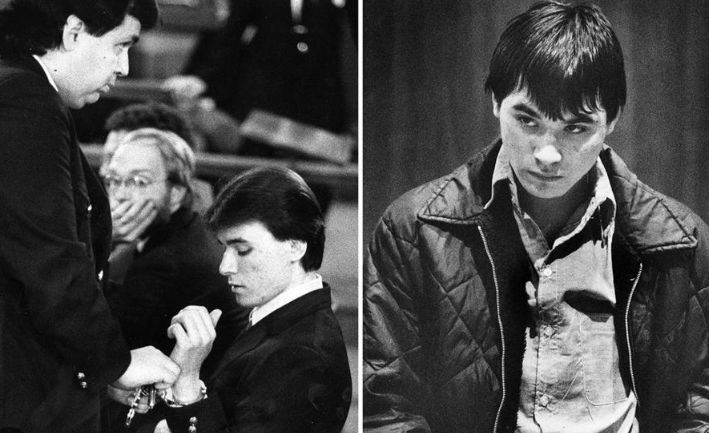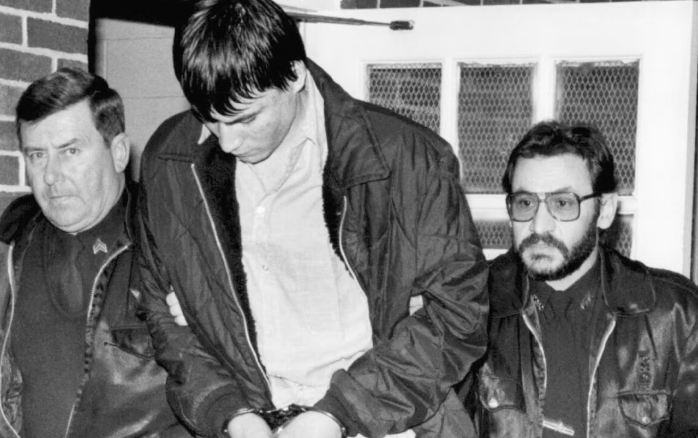Daniel LaPlante: From Outcast to Murderer

Daniel LaPlante: From Outcast to Murderer
Daniel LaPlante’s descent into violent crime is one of the most disturbing cases in American criminal history. Born in 1970 in Townsend, Massachusetts, LaPlante grew up in an environment marked by neglect, abuse, and social alienation. His life spiraled from a troubled childhood into a series of horrific acts that culminated in a brutal triple homicide when he was just a teenager. This is the chilling story of how an outcast became a murderer.
Early Life and Troubled Childhood
Daniel LaPlante’s childhood was filled with emotional, physical, and sexual abuse. Reports indicate that he was molested by multiple adults in his life, including his father and a psychiatrist he was sent to for treatment. These early traumas left deep psychological scars, and LaPlante struggled to fit in both at home and at school.
LaPlante was diagnosed with dyslexia and placed in special education programs, which further isolated him from his peers. He was labeled as strange and socially awkward by classmates, often dressing poorly and failing to maintain basic hygiene. These factors led to relentless bullying, pushing him further into isolation.
As LaPlante entered adolescence, his behavior became increasingly erratic. He started breaking into homes in his neighborhood, not to steal valuables, but to move objects around and unsettle the homeowners. This bizarre form of psychological intrusion hinted at a deeply disturbed mind and foreshadowed the horrors to come.

The Psychological Torment of the Bowen Family
One of the most infamous incidents in LaPlante’s early criminal career occurred in 1986, when he targeted the Bowen family in Pepperell, Massachusetts. LaPlante had broken into their home and, instead of stealing anything, began tormenting them in terrifying ways.
He moved items from one place to another, wrote threatening messages on mirrors, and even left half-eaten food around the house. The Bowen family initially thought they were imagining things or that the house was haunted. The truth, however, was far more disturbing.
At one point, the family found a message scrawled on the wall in what appeared to be blood, reading: “I’m in your room. Come and find me.” Eventually, LaPlante was discovered hiding in a crawl space within the walls of the house, having lived inside their home for weeks without their knowledge. He was wearing the clothing of the deceased mother of the house and wielding a hatchet. LaPlante was arrested and sent to a juvenile detention facility, but this was not the end of his dark journey.
The Murders of the Gustafson Family
In October 1987, just months after being released from juvenile detention, LaPlante committed a crime so brutal it shocked even hardened investigators. On December 1, 1987, he broke into the home of the Gustafson family in Townsend, Massachusetts. Inside were 33-year-old Priscilla Gustafson, who was pregnant at the time, and her two young children: 7-year-old Abigail and 5-year-old William.
LaPlante raped and murdered Priscilla by shooting her in the head. He then drowned both children in separate bathtubs—Abigail in an upstairs bathroom and William downstairs. The violence and cruelty of the crime stunned the quiet community.
When Priscilla’s husband, Andrew Gustafson, returned home from work and found the horrifying scene, he immediately called the police. Investigators quickly zeroed in on LaPlante due to his criminal history and recent release. After a two-day manhunt, LaPlante was found hiding in a nearby dumpster, wet and shivering, yet unrepentant.

Trial and Conviction
Daniel LaPlante’s trial began in 1988 when he was just 18 years old. He was charged with three counts of first-degree murder. The prosecution painted a picture of a deeply disturbed individual who killed without remorse or reason. The defense attempted to argue mental illness, pointing to his abusive background and psychological problems. However, the jury was not convinced.
In 1988, LaPlante was convicted on all counts and sentenced to three consecutive life sentences without the possibility of parole. His crimes had not only devastated the Gustafson family but had also deeply affected the entire community, which struggled to understand how a teenager could commit such atrocities.
Life in Prison and Attempts at Parole
Since his incarceration, LaPlante has continued to generate headlines, primarily due to his attempts to appeal his sentence and gain parole. In the 2010s, he argued that his sentence was unconstitutional, citing a 2012 U.S. Supreme Court ruling that deemed mandatory life without parole for juveniles as cruel and unusual punishment.
In 2017, a resentencing hearing was held to determine whether LaPlante deserved a chance at eventual parole. At the hearing, LaPlante expressed remorse and claimed to have undergone significant personal growth while in prison. However, the prosecution argued that the sheer brutality of his crimes warranted permanent incarceration.
Ultimately, while his sentence was technically modified to allow a possibility of parole after 45 years, LaPlante remains behind bars and will not be eligible for parole until he is in his 60s.
Analysis and Legacy
Daniel LaPlante’s case remains one of the most disturbing examples of adolescent violence in the United States. It highlights the complex intersection of childhood trauma, mental illness, and violent crime. LaPlante was not a typical criminal; his early break-ins revealed a psychological need to instill fear rather than steal material goods. His eventual transition from a voyeuristic intruder to a rapist and murderer demonstrates a terrifying progression of behavior.
The case also raises questions about how society deals with deeply troubled youth. Could better intervention during LaPlante’s early years—more attentive psychiatric care, a more stable home environment, or a more supportive educational setting—have prevented the tragedy? Or was LaPlante always destined to become a killer?
Many experts believe that early warning signs in LaPlante’s behavior—particularly his psychological games during home invasions—were clear indicators of a dangerously unstable individual. Unfortunately, by the time authorities fully recognized the threat he posed, it was too late.
Conclusion
Daniel LaPlante’s story is a grim reminder of the darkness that can fester within a person, especially one exposed to trauma and neglect. From a misunderstood and abused child to a calculating killer, his transformation shocked the world. The lives he took, particularly those of two innocent children and their pregnant mother, remain a painful testament to the consequences of untreated mental illness and unchecked deviance.
Though LaPlante remains in prison, the horror of his crimes continues to haunt those who remember them. His case serves as a stark warning about the importance of early intervention, community vigilance, and the enduring impact of violence on families and society.





